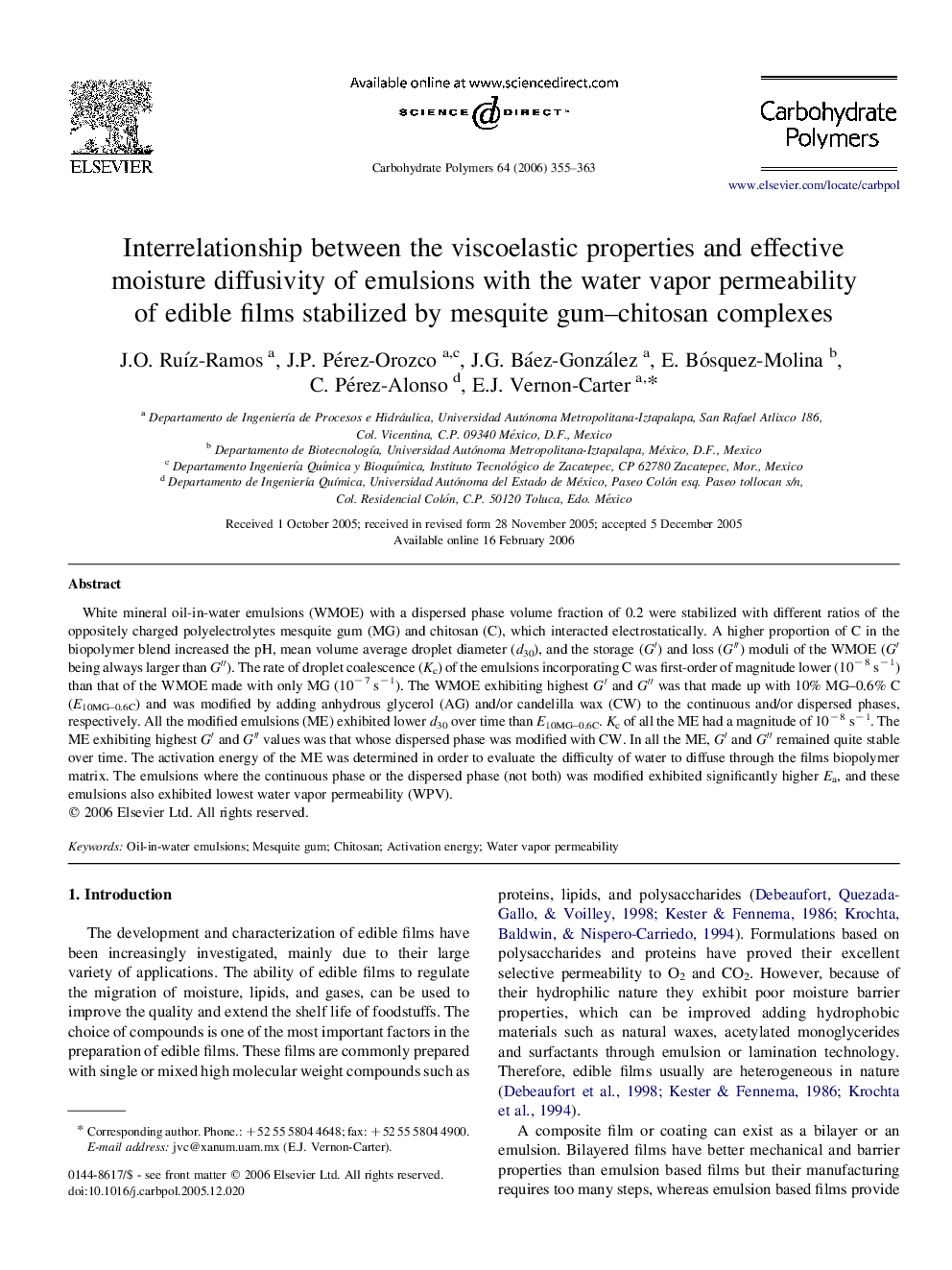| Article ID | Journal | Published Year | Pages | File Type |
|---|---|---|---|---|
| 1385788 | Carbohydrate Polymers | 2006 | 9 Pages |
White mineral oil-in-water emulsions (WMOE) with a dispersed phase volume fraction of 0.2 were stabilized with different ratios of the oppositely charged polyelectrolytes mesquite gum (MG) and chitosan (C), which interacted electrostatically. A higher proportion of C in the biopolymer blend increased the pH, mean volume average droplet diameter (d30), and the storage (G′) and loss (G″) moduli of the WMOE (G′ being always larger than G″). The rate of droplet coalescence (Kc) of the emulsions incorporating C was first-order of magnitude lower (10−8 s−1) than that of the WMOE made with only MG (10−7 s−1). The WMOE exhibiting highest G′ and G″ was that made up with 10% MG–0.6% C (E10MG–0.6C) and was modified by adding anhydrous glycerol (AG) and/or candelilla wax (CW) to the continuous and/or dispersed phases, respectively. All the modified emulsions (ME) exhibited lower d30 over time than E10MG–0.6C. Kc of all the ME had a magnitude of 10−8 s−1. The ME exhibiting highest G′ and G″ values was that whose dispersed phase was modified with CW. In all the ME, G′ and G″ remained quite stable over time. The activation energy of the ME was determined in order to evaluate the difficulty of water to diffuse through the films biopolymer matrix. The emulsions where the continuous phase or the dispersed phase (not both) was modified exhibited significantly higher Ea, and these emulsions also exhibited lowest water vapor permeability (WPV).
